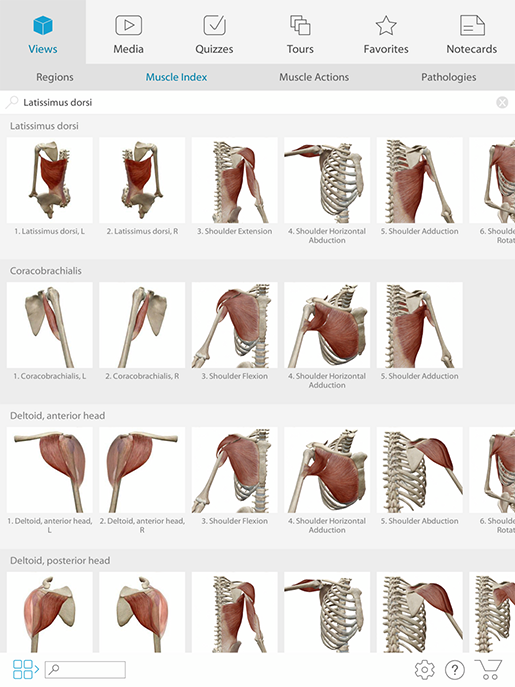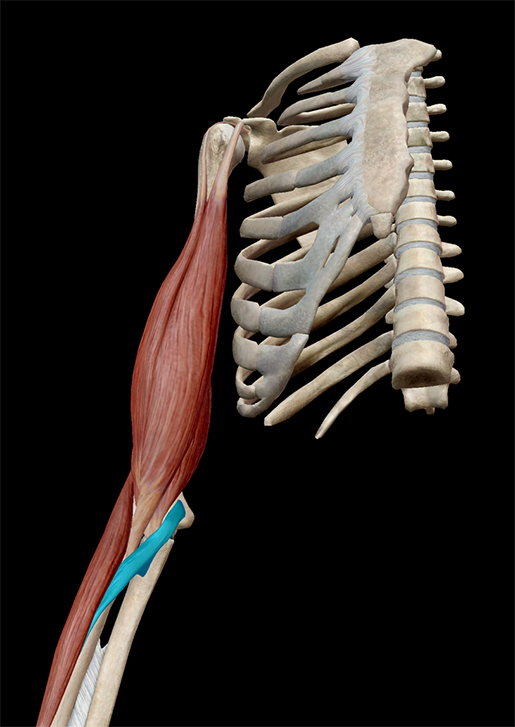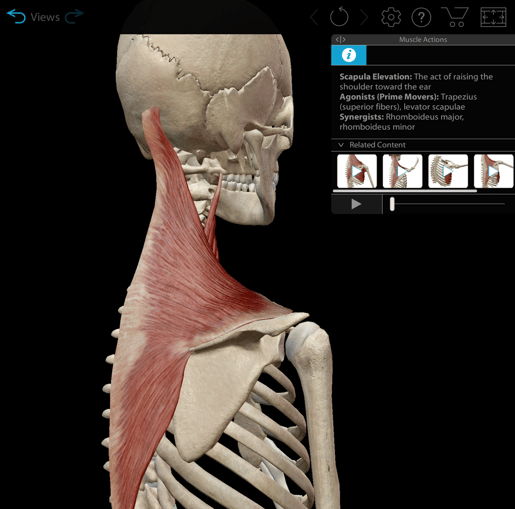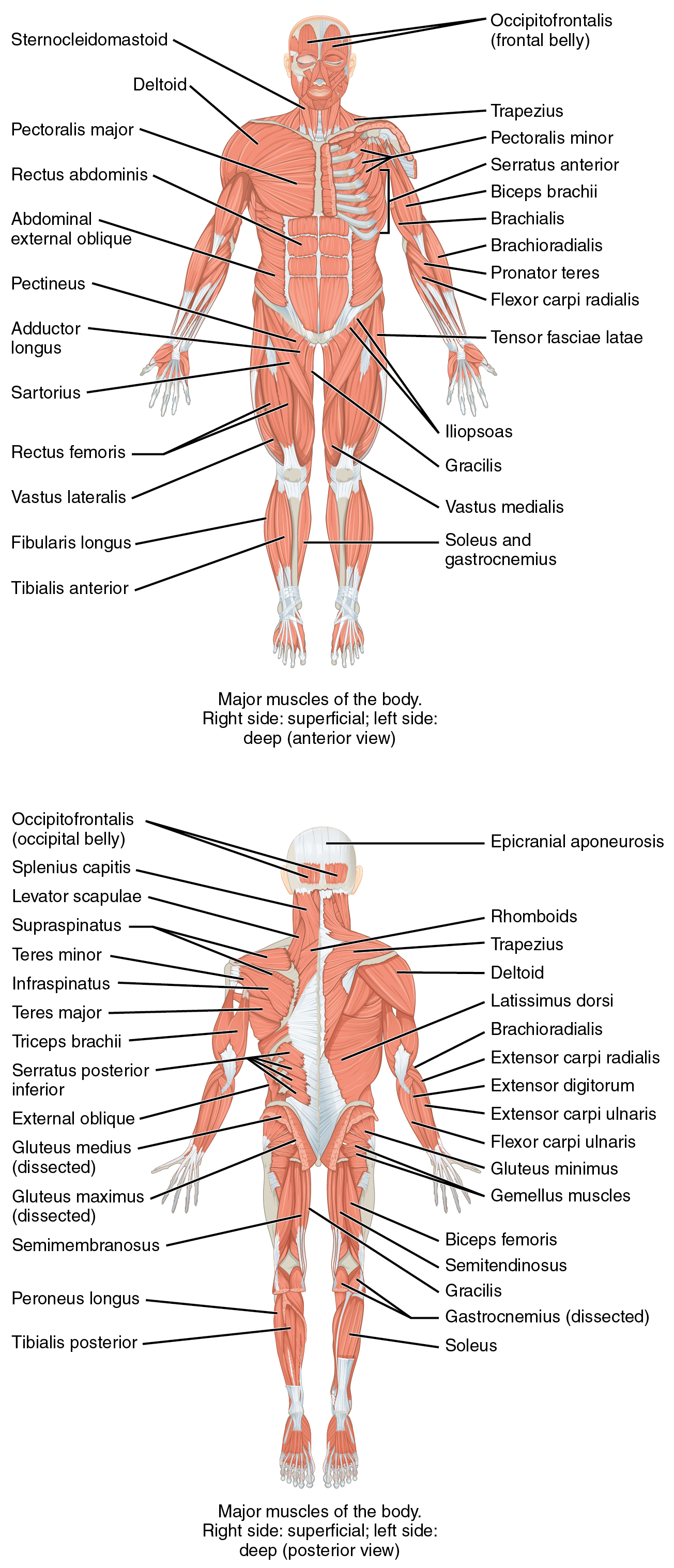Using the Terms Provided Above Identify the Muscles Described Next
For the legs superficial muscles are shown in the anterior view while the posterior view. Your kisser 7 allows you to bite that carrot stick 8.

Interactions Of Skeletal Muscles Anatomy And Physiology I
Relative size of the muscle.

. An-tagonists of the shoulder abductor two g 2. Buccinator frontalis masseter platysma occipitalis orbicularis oculi orbicularis oris zygomaticus Review Sheet 12 285 1. Using the terms provided above identify the muscles described next.
Learn vocabulary terms and more with flashcards games and other study tools. The terms provided in the key are Often used to describe the manner in which muscles Interact with other muscles. You can remember this because the head of a company is your superior at work.
Body intervertebral foramina lamina d. For example that same muscle the biceps brachii performs flexion at the elbow in which the elbow is. The Latin word for right is rectus Rectus abdominis for example identifies the six-pack abdominal muscle that runs down the front of the stomachwith its fibers running parallel to.
Most movements have an opposite movement also known as an. Up to 24 cash back 16. Flexor digitorum superficialis h.
Tenses skin of the neck. Identify three planes most commonly used in the study of anatomy. 114 Anatomy Physology Coloring Workbook 19.
The terms described above assume the person is in the anatomical position. Toward the mid-line middle away from the side. The muscle has a frontal belly and an occipital belly near.
The occipitofrontalis muscle elevates the scalp and eyebrows. Select the key terms that apply to the following definitions and insert the correct letter or term in the answer blanks Key Choices A. Pulls the scalp posteriorly Muscles of the Trunk Column B A.
Using choices from the list at the right correctly identify the muscles provided with leader lines on the diagram. Pumps blood flushes urine out of the body allows one to swing a bat d. The next four pairs of terms.
Its contraction makes the sad clown face pulls the corners of the mouth downward 5. Use the key choices to identify the major tissue types described below. Smiling muscle Puckers the lips 5- Draws the comers of the lips downward 6.
Important in shoulder adduction. Labeled from up to down Key. Anatomical terms of movement are used to describe the actions of muscles upon the skeleton.
Rectus is the word used to identify those muscles whose fibers run parallel to the midline. Select the key terms that apply to the following definitions and insert the correct letter or term in the answer blanks. The terms used assume that the body begins in the anatomical position.
It does not matter how the body being described is oriented the terms are used as if it is in anatomical position. Distinguish between the posterior dorsal and the anterior ventral body cavities identifying their subdivisions and representative organs found in each. Flexor carpi radialis fflexor carpi ulnaris g.
The upper limbs are held out to each side and the palms of the hands face forward as illustrated in Figure 141. Extensor carpi radialis longus e. Involving one side of the body.
Involving both sides of the body. For example the skin is superficial to the skeletal muscles. Prime mover for arm extension muscles h 3.
An antagonist muscle relaxes or stretches when the prime. A muscle that assists the prime mover muscle. Transverse process vertebral arch vertebral foramen and.
Start studying Identify Muscles. Location of muscle relative to bone or body region. The orbicularis oris is a circular muscle that moves the lips and the orbicularis oculi is a circular muscle that closes the eye.
Lines body cavities and covers the bodys external surface c. Anatomists and health care providers use terminology that can be bewildering to the uninitiated. Used to grin 2.
Holds it in place so that the prime mover can act more efficiently. Before continuing use a human. Raises your eyebrows for a questioning expression 6.
Overview of the Muscular System. A muscle in opposition to the action of a prime mover muscle. Select the key terms that apply to the following definitions and insert the correct letter or term in the ahswer blanks.
Up to 24 cash back The terms provided in the key are often used to describe the manner in which muscles interact with other muscles. A major spine flexor gh 6. On opposite sides of the body.
On the same side of the body. On the anterior and posterior views of the muscular system above superficial muscles those at the surface are shown on the right side of the body while deep muscles those underneath the superficial muscles are shown on the left half of the body. Up to 24 cash back Identify and use anatomical terms to correctly label the following regions on Figure 1.
Synergist C Hovet 1. Muscles contract to produce movement at joints and the subsequent movements can be precisely described using this terminology. Cranial aponeurosis Using the terms provided above identify the muscles described next.
Location of muscle relative to bone or body region. Toward the back toward the tail. More than one choice may apply in some cases Also use the key letters to correctly identify the vertebral areas in the diagram.
Direction in which the muscle fibers run relative to some imaginary line. Postural muscles for the most part. Prime mover for arm flexion 7.
The terms provided in the key are often used to describe the manner in which muscles interact with other muscles. Up to 24 cash back Document1. A muscle that stabilizes the origin of the prime mover ie.
Used in blinking and squinting 4. Moves the scapula forward and rotates scapula upward e f n j 4. A muscle that is primarily responsible for the movement.
Pulls the eyebrows superiorly 3. Using this standard position reduces confusion. Match the muscle names in Column B to the facial muscles described in Column A.
Using the key correctly identify the vertebral partsareas described below. He or she holds a higher position than you do. Using terms from the key on the right correctly identify all muscles provided with leader lines in the illustration.
They are above you in. Using the key provided in question 5 above identify the major muscles described next. Practice Using Correct Anatomical Terminology.
Muscle used during whistling 3. Superior or cranial means toward the head end of the body or higherabove. For example a scar in the anterior front carpal wrist.
The second way to describe a muscles action is based on the joint or the articulation. The first pair of directional terms refer to the relative position toward or away from the head.

A Visual Guide To Muscle Terminology With Muscles Kinesiology

A Visual Guide To Muscle Terminology With Muscles Kinesiology

A Visual Guide To Muscle Terminology With Muscles Kinesiology

Comments
Post a Comment